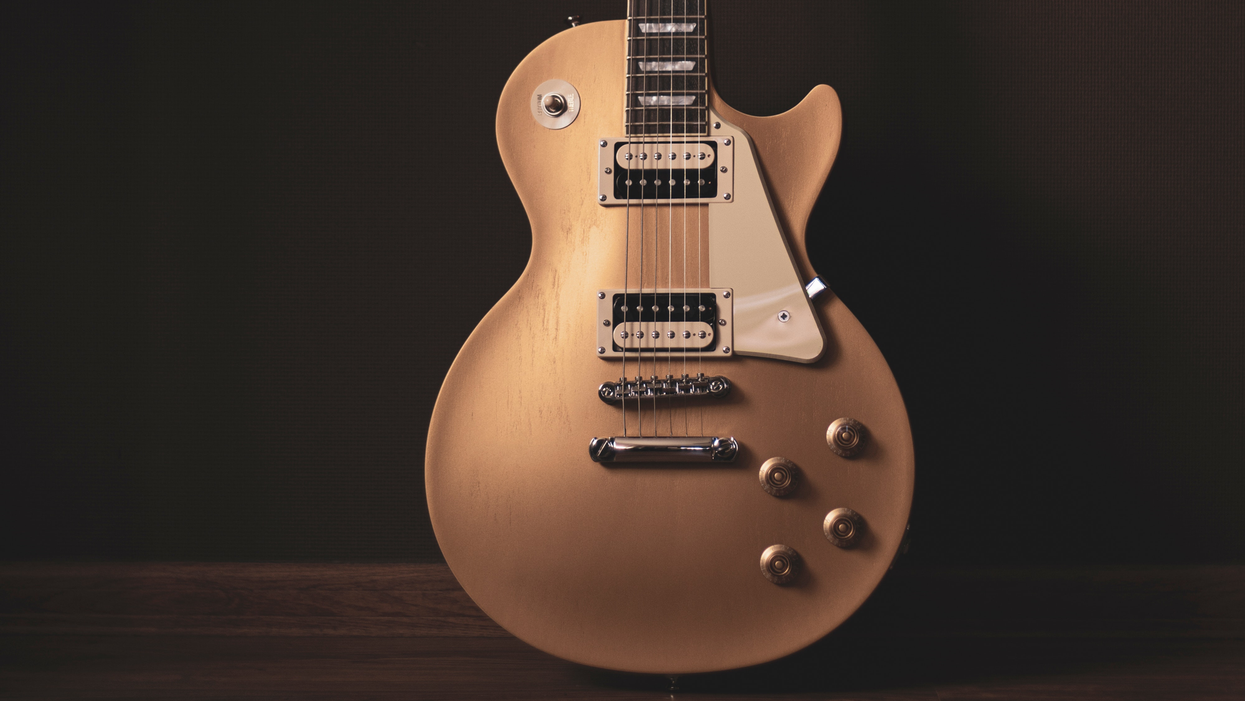We all get burned out playing the same scales, the same way, over and over. A common solution to that guitar-driven angst is to search out other scales, hoping to find a new muse. While learning new scales is an important part of your development as a player, you can often overlook some structures within a scale that you already know.
The blues scale is usually one of the first scales a guitarist learns and is arguably used in almost every genre of guitar playing. Just for review, look at Ex. 1, which lays out the notes of the A blues scale (A–C–D–Eb–E–G). If you've already worked on the blues scale, ask yourself if you can identify each scale tone on every string. That knowledge is important! You'll have a deeper understanding of what you're playing, and it will keep you away from the "this-looks-like-it-sounds-cool" approach.

The most common fingering for the A blues scale is found in 5th position, and the second most common pattern is in 12th position. Ex. 2 shows all positions of the A blues scale. Base your fingerings to these patterns on the minor pentatonic modes but notice that adding the blue note creates some new shifting that you'll have to keep an eye on.

So, now you know the scale and you know how to play it everywhere on the neck. But here's the thing: Think of the scale as a six-note (hexatonic) scale rather than simply a minor pentatonic with an added note. Doing so will enable you to conceive of new and different things to play. One common way to reorganize the notes in a hexatonic scale is to pair the notes in thirds, or every other note. Look at Ex. 3 where these pairs are mapped out in 5th position and shows the intervals they create.

If you did this with a minor pentatonic, you would get four perfect fourths (P4) and one major third (M3) for a total of five intervals. With the blues scale, you get a perfect fourth, minor third (m3), major second (M2), major third, and then two perfect fourths for a grand total of six intervals. The b5 in the middle of the scale is the reason for the variety and squirrelly nature of the results and gives you different tools to add a new dimension to your blues playing.
To get these under your fingers and give you something to play, listen to Ex. 4 where these pairs are played ascending through the scale pattern in fifth position.
Ex. 4
Naturally, anytime you work on a sequential pattern it's helpful to twist those around into different permutations. In Ex. 5 I descend each interval pair while ascending the scale.
Ex. 5
Let's mix it up! In Ex. 6 and Ex. 7 I alternate through the intervals—first I go up then down before reversing the pattern. The fingerings will be pretty logical and common, but, some latitude and creativeness will be needed at some point. Work out something that makes sense to you but doesn't stray too far from the typical scale fingering. Apply the same method to the other four scale patterns and maintain them in position. Fun times.
Ex. 6
Ex. 7
Now for some meat and potatoes. Ex. 8 uses the scale patterns we've been working on. The first two measures use the descending interval concept leading to the rotating major and minor intervals played in triplets in measure 3. Measure 4 is a "two-up, one-down" combination of intervals that lead to a couple of ascending intervals to end the line.
Ex. 8
Ex. 9 is designed to travel up the neck a little more, using scale patterns through several positions. The original idea in measure 1 is played in 5th position and uses rotating intervals. It's played again in measures 2 and 3 an octave up in 7th position, then is answered by the descending intervals in 10th position going into measure 4. As with any new concept, the challenge is to make music and not sound like you're playing an exercise. In these examples, I added some rhythmic variety, space, and musical range to create something that sounds more like a line, not like an exercise.
Ex. 9
This interval sequence can also be played on adjacent strings. Whether together or broken up, you can use them to move along the neck to switch positions while soloing, create a vamp, or add another note to get some funky bluesy three-note chords. See Ex. 10 for the mapping of these intervals on all adjacent string sets.

Ex. 11 adds the intervals on the 4th and 3rd strings to a traditional sounding blues-rock riff. Measures 1 and 3 are identical, and the notes of the intervals are held out to get a little more grit. Measure 2 has a descending run of the intervals to get to the bar line, finishing with another descending run of eighth-notes while switching string sets.
Ex. 11
In Ex.12, I was going for more of a triplet feel that traveled the length of the neck. Mission accomplished. But remember this pro tip: What looks great on paper can be a real pain to play. In measure 1, the intervals are not played in order, but skipping over one of them and then backtracking. After that I'm trying to exploit the b5–5 combination to get from the top two strings to the shapes on the 3rd and 2nd strings. The fingerings are pretty shape-oriented until you get to measure 4. My advice there is to be resourceful.
Ex. 12
Keep in mind, this is only one potential way to group the notes of the blues scale. Explore other possible two-note groupings, either in position or lengthwise up and down the neck. Create a three-note chord shape and run it through the scale just to see what you get. Play all of this with a backing track to really hear what it sounds like. Keep the good stuff and don't worry about the other stuff. There's always another way to look at a scale.










![Rig Rundown: AFI [2025]](https://www.premierguitar.com/media-library/youtube.jpg?id=62064741&width=1245&height=700&quality=70&coordinates=0%2C0%2C0%2C0)







